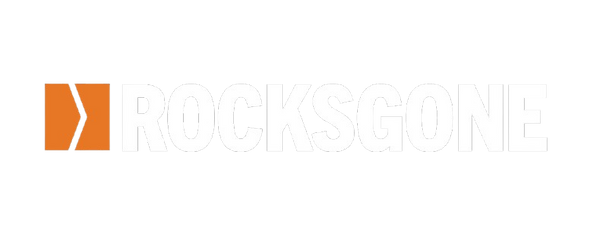 Photo caption 1-3: Goldfields producers Stephen Rodger and Tracy Hunt, Burkes Flat, together with daughter, Emmerson, with their Rocks Gone H4 Reefinator. The rock crushing machine is helping to improve a mix of quartz and shale country.
Photo caption 1-3: Goldfields producers Stephen Rodger and Tracy Hunt, Burkes Flat, together with daughter, Emmerson, with their Rocks Gone H4 Reefinator. The rock crushing machine is helping to improve a mix of quartz and shale country.
FARMING couple Stephen Rodger and Tracy Hunt have adopted a regenerative farming approach on family land in Victoria’s Goldfields region, and the use of a machine to transform some of the landscape is helping to achieve it.
The couple are managing about 1400 hectares near Burkes Flat, east of St Arnaud, and their main focus is running about 2500 Merino ewes, including for crossbred lamb production. They are planning to improve land that previously couldn’t be utilised through activities such as multispecies cropping.
Their farming land predominantly comprises grey box and ironbark country, as well as some tough ironstone ridges, while the land being improved is typical of the Goldfields region, featuring a mix of quartz and shale country.
The area comprises about 330ha and Stephen said they purchased a Rocks Gone H4 Reefinator rock crushing machine to help transform it. The 3-metre wide machine features a levelling blade, four front row and five rear row hydraulic tines, and a following ribbed drum, all weighing 28-tonne when filled with water and digging up to 600 millimetres deep.
“You certainly couldn’t get over the area with an airseeder. You couldn’t even drive over sections before,” Stephen said.
“We are working on three passes with the machine – going to a depth of 10-20 centimetres, then to 25cm, and we do a final roll and use a grader blade to level it.”
He said they already had worked a reasonable amount of the area, including a paddock that had been unusable as a cropping paddock, and are now working towards putting a crop in.
It also has been able to work in steep country, and, as a result, has assisted the construction of some contour banks following a pass with the machine, plus potential for future cropping where it was otherwise not possible.
“We can now get the airseeder across the ground and we can just drop the seed on top and then go over it with a roller,” Stephen said.
“Where we sowed some summer crops (in 2023), it was phenomenal. We planted in October and, with the help of a bit of rain, we had some sorghum and summer crops that were 8-foot high. A carbon capture company was surprised with the results on the country as well.”
The H4 Reefinator has been pulled by a 410-kilowatt (550-horsepower) Steiger tractor, travelling mainly at around 5-6 kilometres per hour, and Stephen said the toughest part of the operation had been the strain on the tractor’s tyres.
Fortunately, new automation technology now available with the Rocks Gone Reefinator machines helps to reduce tyre wear considerably, in addition to providing other significant operational benefits.
Operators have previously had to perform on-the-go depth adjustments according to changes in land and rock conditions, however the Rocks Gone ‘Depth Master’ auto depth and slip control system has largely removed this pressure. They now set the depth and only make a manual adjustment if desired, thereby better optimising machine and tractor performance and resulting in improved crushing results and operational efficiency.
Suitable for ISOBUS and GPS-integrated tractors, the system calculates speed over ground and tractor load or wheel slip to adjust machine depth up to 50 times per second, as well as the level of its blade. It also can produce depth maps of worked areas, helping to limit any extra passes to specific areas.
Stephen and Tracy grew some oats and wheat over the area last season and this year they are planning to produce pastures and grain crops.
“We have millet, corn, sunflower, radish and lablab over summer and during winter we plan to grow vetch, oats, radish and quinoa, and we will graze them,” Stephen said.
“Hopefully the different crop species can play their part to improve the soil and then, in a few years, we should be right to return to a cropping phase.
“We are looking at finding ways to incorporate regenerative agriculture into our farming.”
In-line with their regenerative farming approach, Stephen and Tracy are following the Natural Sequence Farming land management practice developed by Peter Andrews, which aims to restore natural water cycles in agriculture landscapes.
“It is about rehydrating landscapes and maximising water efficiency to help grow more plants,” Stephen said.
Media information: Rohan Howatson, Howatson PR Communications, on 0407 428 459.
